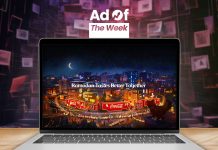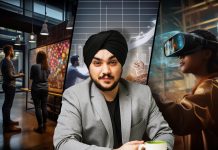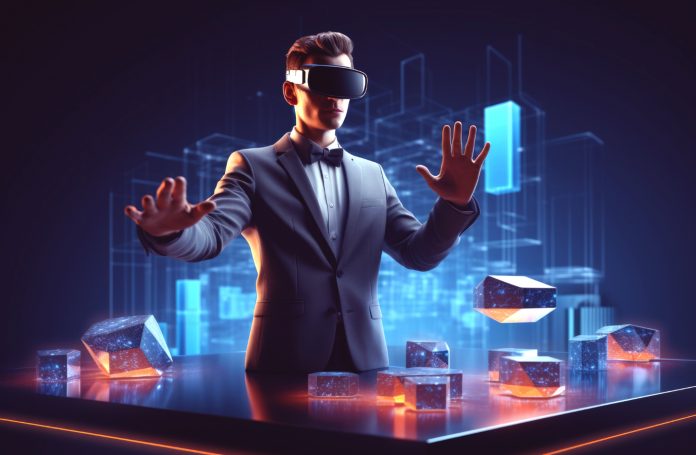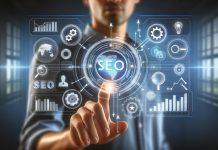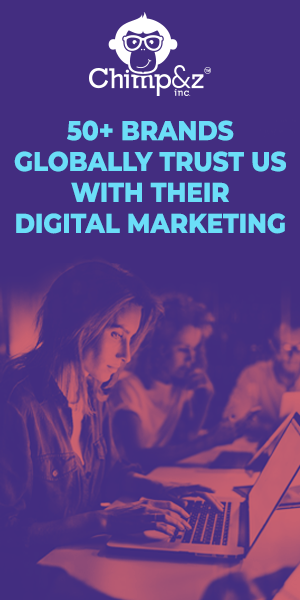AR and VR are two terms that most of us have familiarized ourselves with and even come across at one or other time in our lives in the last few years. We now find that they are being integrated into most fields including education, retail, and even healthcare. Marketing is no exception to this double duo of digital transformation. Marketers are now focusing on incorporating these two technologies into their campaigns and ads to unlock a whole new level of immersive experiences for their audience. Still confused? Let’s start by breaking down these terms first.
Virtual Reality (VR): Unlocking New Realities
VR or virtual reality is a computer-generated environment that gives users the impression that they are fully immersed in their surroundings by simulating real-world scenes and objects. A virtual reality headset, helmet, or other equipment is used to view this environment. In the realm of marketing, brands make use of virtual reality to create experiences that are both immersive and realistic for their consumers. With the use of a simulated environment, this technology enables consumers to interact with a brand’s products or services. A good example of this is the all-famous brand, Gucci. Gucci introduced “Gucci Town,” a virtual environment that can be explored and used for a variety of activities inside the Roblox metaverse. Within this year itself, the international VR advertising market is estimated to earn somewhere close to US$174.0m, showing the sway this technology has on both advertisers and consumers.
Most brands are making use of this technology to come up with innovative marketing and advertising campaigns that involve transporting their consumers to virtual environments such as Gucci. This is a creative method that helps a firm not only capture their audience’s attention but also build upon their customer loyalty as well as engagement. What’s more, a brand can also create its own stories and narratives with the use of VR, uniquely showcasing its products or services. This technology allows brands to also appeal to a more emotion-oriented side of their customers. Data shows that a VR experience can evoke certain emotions, facilitate sensory responses, and create an unforgettable interaction for consumers. Brands can enjoy triple-fold advantages, that is, standing out amongst competitors, creating awareness of their brand, and creating uniquely immersive experiences. For a business in Mumbai, it is a good idea to partner with an SEM agency in Mumbai to optimize their content in the world of virtual reality.
Augmented Reality (AR): Enhancing the Real World
VR, okay, we got that figured out. What about AR though? Let’s dive into understanding the second of these fascinating technologies and the role they play in the marketing world. An improved representation of the real world is known as Augmented Reality (AR), which is made possible by the use of digital data produced by computers. They consist of auditory, visual, and other sensory components. Augmented Reality (AR) integrates digital content with the physical world through computer gear and software, including apps, consoles, screens, and projections. In marketing, brands use AR to allow consumers to interact with a virtual version of their product in the real-time world.
An example of this is the well-known brand IKEA, which uses Augmented Reality to enable buyers to imagine furniture in their environments before making a purchase. This provides a new and novel shopping experience leading to an increased level of consumer confidence in the brand and its offerings. Not limited to only showcasing their products, brands also use AR to craft innovative marketing campaigns, leaving a lasting impact on their audience. An example of this is Pepsi MAX’s campaign which made use of AR technology to trick viewers into believing they were peering through the glass wall of the bus shelter, while in fact, they were watching a live stream of events taking place outside the shelter.
For businesses that want to stand out amongst their competition, AR is certainly the way to go. Brands can enlist the services of a PPC company in Mumbai to effectively incorporate AR technology and its elements into their marketing operations and strategies.
All New Marketing Strategies
A blend of these smart technologies gives brands the potential to completely transform their strategies and revisit the way they look at things. When it comes to consumer experiences, both VR & AR enable firms to craft an experience that their consumers will only be able to describe as one-of-a-kind.
In a city such as Mumbai, which is well-known for its fast-paced and dynamic landscape, using technology such as VR and AR offers numerous benefits for companies in the digital field. Moreover, with the help of an SEM agency in Mumbai, a firm can understand the intricacies of SEO marketing and how to use VR to its advantage. Simultaneously, a PPC company in Mumbai can craft targeted campaigns that leverage the interactive capabilities of AR for enhanced customer engagement.
Virtual and augmented reality integration into global marketing efforts is a game-changing development rather than a fad. Businesses need to realize that VR and AR can create unmatched brand experiences as technology develops. These technologies are revolutionizing marketing, one fascinating experience at a time, whether it’s by improving real-world interactions with augmented material or by enabling immersive storytelling in virtual settings.






